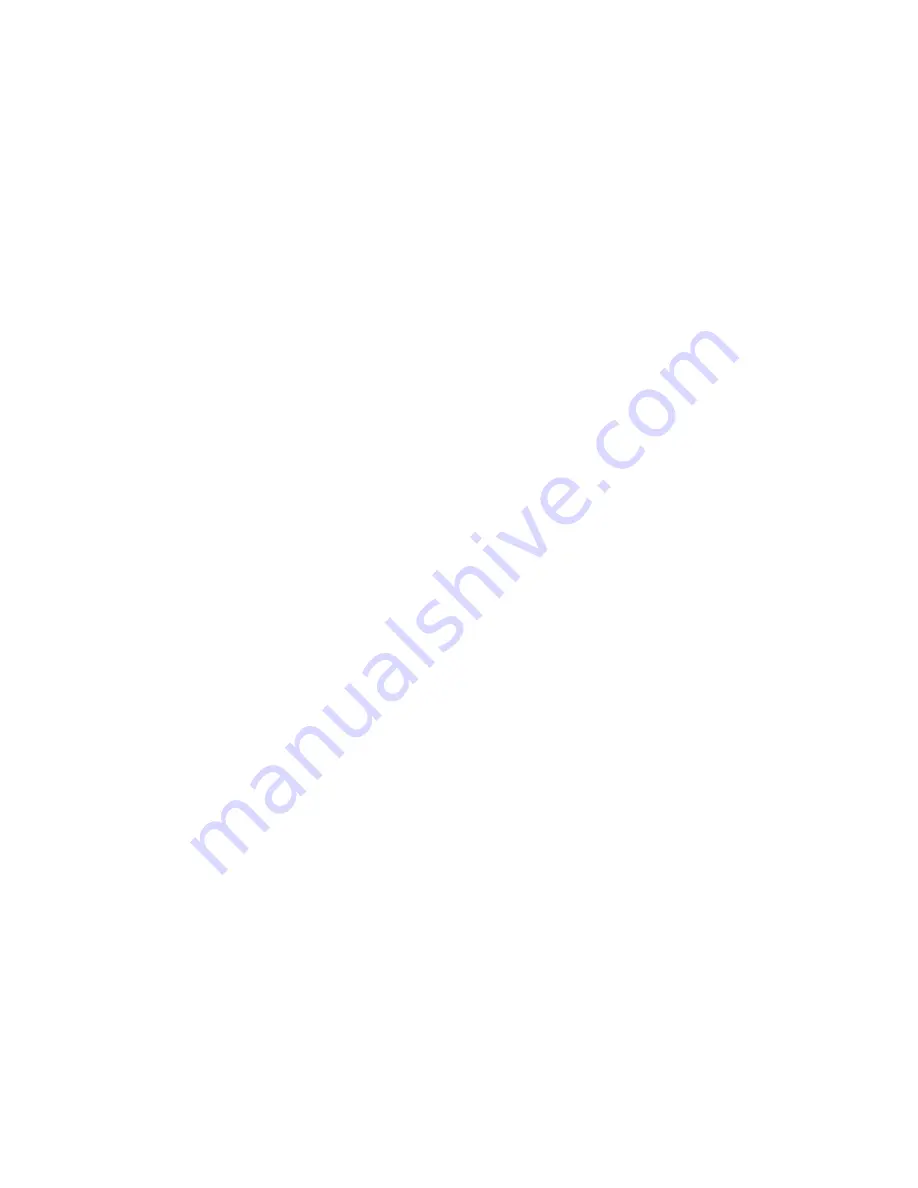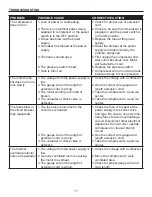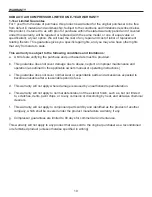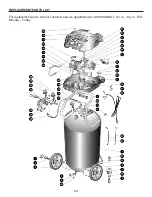
6
Personal Safety
•
Eye protection which conforms to ANSI specifications and provides protection against flying
particles both from the FRONT and SIDE should ALWAYS be worn by the operator and others
in the work area when loading, operating, or servicing this tool.
Eye protection is required to
guard against flying fasteners and debris, which could cause severe eye injury.
•
The employer and/or user must ensure that proper eye protection is worn.
A wide vision safety
mask is recommended for use over eyeglasses or standard safety glasses that provide protection
against flying particles both from the front and side. Always use eye protection which is marked to
comply with ANSI Z87.1.
•
Additional safety protection will be required in some environments.
For example, the working
area may include exposure to a noise level which can lead to hearing damage. The employer and
user must ensure that any necessary hearing protection is provided and used by the operator and
others in the work area. Some environments will require the use of head protection equipment.
When required, the employer and user must ensure that head protection marked to comply with
ANSI Z89.1 is used.
•
Stay alert, watch what you are doing, and use common sense when operating a power tool.
Do not use tools while tired or under the influence of drugs, alcohol, or medication.
A moment
of inattention while operating power tools may result in serious personal injury.
•
Dress properly. Do not wear loose clothing or jewelry. Contain long hair. Keep your hair,
clothing, and gloves away from moving parts.
Loose clothes, jewelry, or long hair can be caught
in moving parts.
•
Do not overreach. Keep proper footing and balance at all times.
Proper footing and balance
enables better control of the tool in unexpected situations.
•
Use safety equipment. Always wear eye protection.
A dust mask, nonskid safety shoes, hard hat,
or hearing protection must be used for appropriate conditions.
•
Do not use on a ladder or unstable support.
Stable footing on a solid surface enables better
control of the tool in unexpected situations.
Tool use and care
•
Do not exceed the pressure rating of any component in the system.
•
Protect material lines and air lines from damage or puncture.
Keep the hose and power cord
away from sharp objects, chemical spills, oil, solvents, and wet floors.
•
Check hoses for weak or worn condition before each use, making certain all connections are
secure.
Do not use if a defect is found. Purchase a new hose or notify an authorized service center
for examination or repair.
•
Release the pressure within the system slowly.
Dust and debris may be harmful.
•
Store idle tools out of the reach of children and other untrained persons.
Tools are dangerous
in the hands of untrained users.
•
Maintain tools with care.
Follow maintenance instructions. Properly maintained tools are easier to
control.
•
Check for misalignment or binding of moving parts, breakage of parts, and any other
condition that may affect the tool’s operation. If damaged, have the tool serviced before
using.
Many accidents are caused by poorly maintained tools.
•
Never point any tool toward yourself or others.
•
Keep the exterior of the air compressor dry, clean, and free from oil and grease.
Always
use a clean cloth when cleaning. Never use brake fluids, gasoline, petroleum-based products, or
any strong solvents to clean the unit. Following this rule will reduce the risk of deterioration of the
enclosure plastic.







































